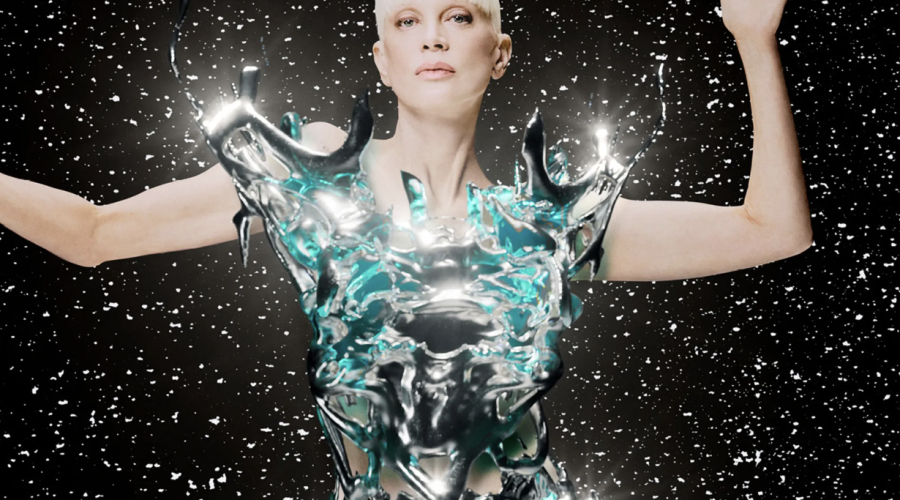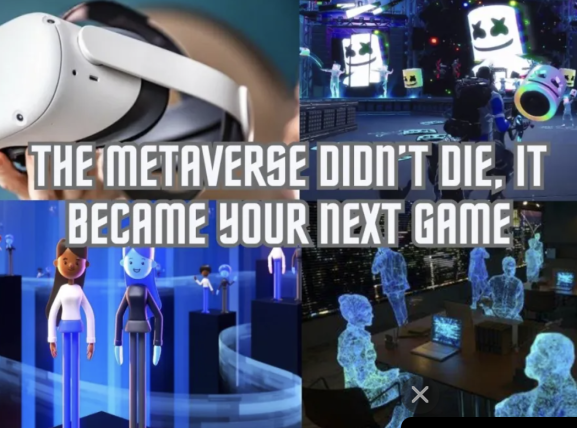Is digital fashion still in fashion?
A few years before the pandemic, the future of fashion began to feel very close. There was Lil Miquela (rings a bell right?), a CGI influencer created in 2016 as an Instagram account that grew to over a million followers in under two years. In 2018, Scandinavian retailer Carlings released a digital clothing collection in partnership with Virtue Worldwide that sold out in a week. By 2022, Gucci, Balmain and Prada had sold digital or phygital fashion as NFTs, and there was a pretty well-attended Metaverse Fashion Week.
But that same year, crypto crashed. NFTs fell off a cliff. At the moment, it feels like the metaverse has been slightly forgotten and everyone’s worrying about AI taking their jobs. How has this downswing affected fashion’s pixelated dreams? Is digital fashion still in fashion? And what do brands need to do in order to engage with the space in a genuine manner? We asked those working at the forefront of the digital fashion industry to lay it out.
Leanne Elliott-Young, CEO and co-founder of the Institute of Digital Fashion
Digital fashion is a great solution when it comes to some of fashion’s sustainability and diversity issues. The beauty of a digital asset is in its endless possibilities — both in the hands of the creative as well as the audience. I think initially we were all excited about it because it looked like a direct answer to physical fashion’s pain points. We had a vision that technology would come on leaps and bounds.
But then what’s happened post-Covid is that actually everyone is so rejoiced that we aren’t locked down, that the idea of metaverse spaces elicits a knee-jerk reaction. Everyone’s moving away from it.
But digital fashion is not a trend — it’s a tool. It can add layers. If you’re just making a twin of something that’s physical, you’ve already failed. No one’s going to feel it the same way. It has nothing to do with the vernacular of physical fashion, which is so steeped in craft and artistry. And it can’t express or play with the real possibilities of digital because it’s a twin.
Everyone’s like, ‘Oh, digital fashion is dead.’ But if you look at all the amazing statistics on Roblox or Fortnite — in 2023, Fortnite got $204 million in developer payouts, a 300 per cent increase from the year before — that is a really interesting point for the trajectory of digital fashion. It’s always been within gaming and now we see physical and luxury fashion stepping into that space.
And that’s another opportunity for us to create change: how can the creators get paid more? Historically in fashion, there’s been this really top-heavy payment structure where you work for accolades and internships. Whereas UGC (user-generated content) is a massive part of gaming, where people are earning real wages when creating. Gen Z and Gen Alpha understand creativity in this really nuanced way, which is about co-creation. And the bigger brands and luxury fashion houses are so scared of co-creation that I think they’re at risk of missing out.
Matt Powell, retail analyst at BCE Consulting
The big driver behind NFTs was the idea that everybody was going to get rich. And of course everybody can’t get rich. So I think very quickly people lost interest because there was just so much counterfeit going on and people weren’t making any money. In addition to that, we learnt that maintaining an NFT uses a tremendous amount of energy.
I don’t think any brand or retailer really figured out how to monetise them and how to make that connection between the physical and the digital product. So it’s played itself out. There’s certainly not the interest that there was a few years ago.
Brands and retailers want to get closer to their consumer; to understand them better. They want to develop a one-on-one relationship with them. And so they’ve got to figure out ways to do that. But I have not heard of any new big idea, like NFTs was, that is going to drive the marketplace at this point.
Mason Rothschild, founder of digital creative agency Gasoline
Right now, people are really picking and choosing carefully where they’re spending their money and their purchasing power as consumers. It has become clear that the idea of a Web3 utopia hasn’t quite caught on the way people had hoped.
In reality, digital fashion doesn’t have much intrinsic value. A lot of people these days wear something once and then put it on Depop or another platform to keep it moving. It’s not the same with digital; there’s zero market for that. There is opportunity within digital fashion, but for it to succeed, the physical representation needs to be very strong. That’s the biggest takeaway: nobody’s going to spend money on a digital car if they don’t have the real one. Nobody’s going to spend money on digital clothes if they don’t have the physical version.
I think there’s a path forward for digital fashion when it comes to verification of authenticity and for building community. There’s massive potential in being able to verify who owns your product. The best way to lean into digital products is to use something like Shopify integration, where people who own multiples of your products can easily verify ownership and gain access to your newest drop or release.
Alice Delahunt, founder and CEO of digital fashion platform Syky
For the industry to move forward, it’s important to shed speculative hype and quick flip projects. Along with the fervour of interest that came with the metaverse or digital fashion or NFTs, so too came projects that did not have real utility. When we speak about digital fashion, we have to speak about it in the same language that we do traditional fashion — understand that many of the big fashion houses will in the future have digital fashion production lines, as they do physical production lines, and that the creative output for that physical production will be as important for the digital production.
We also need to realise it’s quite early. The Apple Vision Pro has just launched. When the first iPhone launched, there was no front-facing camera and there was no App Store. So if I consider the impact the Vision Pro is going to have on a mixed reality future, in which we have digital-only, physical and mixed reality environments, it is undeniable that digital fashion will have a role to play in that.
The digital fashion space has grown because worlds have grown. Fortnite has grown by 150 million users in 12 months. We spent a lot of time speaking about TikTok, but teenagers are spending more time today on Roblox and other worlds, where they’re wearing digital fashion. In 2023, Roblox had 165 billion avatar updates, and there were 1.6 billion digital fashion items and accessories bought, which is phenomenal.
When wondering about the future of digital fashion, I would advise anyone to strip away the noise and look at the underlying facts. Digital fashion is an inevitable part of the future.
Kenneth Loo, co-founder of communications agency Chapter 2
The reality is, we’re still in the nascent stages of digital fashion. A lot of consumers are still acclimating to the concept of blending physical and digital fashion, which makes it challenging for digital-only fashion to convincingly fulfil consumer needs. This is compounded by consumer adoption outpacing the technological advancements needed to build a profitable model for most companies to thrive, which is why we see pioneers in digital fashion struggling.
In tough economic times, we’ve seen the choice often lean in favour of tangible items that are infused with emerging technology; providing the best of both worlds.
I’ve been working in digital fashion for several years, so I’ve seen the rapid evolution and swift changes that the industry has undergone to reach the current landscape. I’ve also seen real changes in consumer behaviour and adoption. And while it’s been quite an uphill battle, there’s an incredible amount of optimism and potential that I continue to see in this space. Though we have yet to see a breakthrough moment or mass consumer adoption, there will be the dawn of what is being dubbed ‘social reality’ where our avatars will soon be living better lives than we are. It’s why I’ve invested heavily, both personally and professionally, in digital fashion and continue to champion innovators working to progress the whole industry forward.
Gmoney, founder of digital fashion house 9dcc
The biggest metaverses out there right now are Fortnite and Roblox, but they’re closed ecosystems. Where digital fashion starts to become really interesting is when these different worlds start opening up, and you can take what you own in one metaverse and utilise it in another. And I just don’t think that exists yet.
I spent a lot of time thinking about this while building 9dcc. Digital products are the Holy Grail for any brand because the margins are just so much better, you don’t need to make a physical piece. But you also need to build that connection in the real world, because at the end of the day, we’re real beings.
At 9dcc, we’re focused on creating connections between the physical and the digital, which is why we put NFC chips in our hats. We’ve been creating this digital engagement layer to form a stronger bond with our community by giving them experiences that you can only have if you own the physical product. In about three minutes we start our weekly game. The only way to play the game is by tapping the product during a specific time frame.
So I think digital fashion will be a big thing in the future. Think about the Apple Vision Pro and even the Meta Ray-Ban glasses. Eventually, these will come in the shape of a pair of glasses or even a contact lens and I’ll be able to see you wearing what you want me to see. But you need to meet consumers where they are and at this moment in time, consumers aren’t there. Whether it takes five months, five years or 15 years to get there, that remains to be seen.
Isabel Martinez aka Isabelita Virtual, creative director
Digital fashion is part of a larger ecosystem. We cannot think of it as a trend but as a long-term construction. This is why digital fashion challenges brands to make a commitment and to be authentic.
Some brands don’t understand that this new realm has to be part of a broader strategy. We’ve witnessed brands adopting superficial approaches to tech innovation. There have been recent cases of brands whose promises about loyalty linked to blockchain have dissolved into nothing. This creates disappointed customers who feel like guinea pigs.
Brands have a great opportunity to think out of the box. The challenge is to go beyond the limits we face in real life, where the most evident way to express your identity is through clothing. On the other hand, it’s a great moment for digital designers. If I had a small digital fashion brand, I would put a lot of effort into offering my audience more than just futuristic designs; I would offer them a point of view, a vision to connect with.
Also, coherence is hard to achieve. The narrative of sustainability and creating a more democratic fashion system is very powerful and inspiring but it also has a darker side. Knowledge and a team with a vision broad enough to see the big picture are key to being able to defend the arguments and challenges that we are facing in the digital realm.
Vogue







